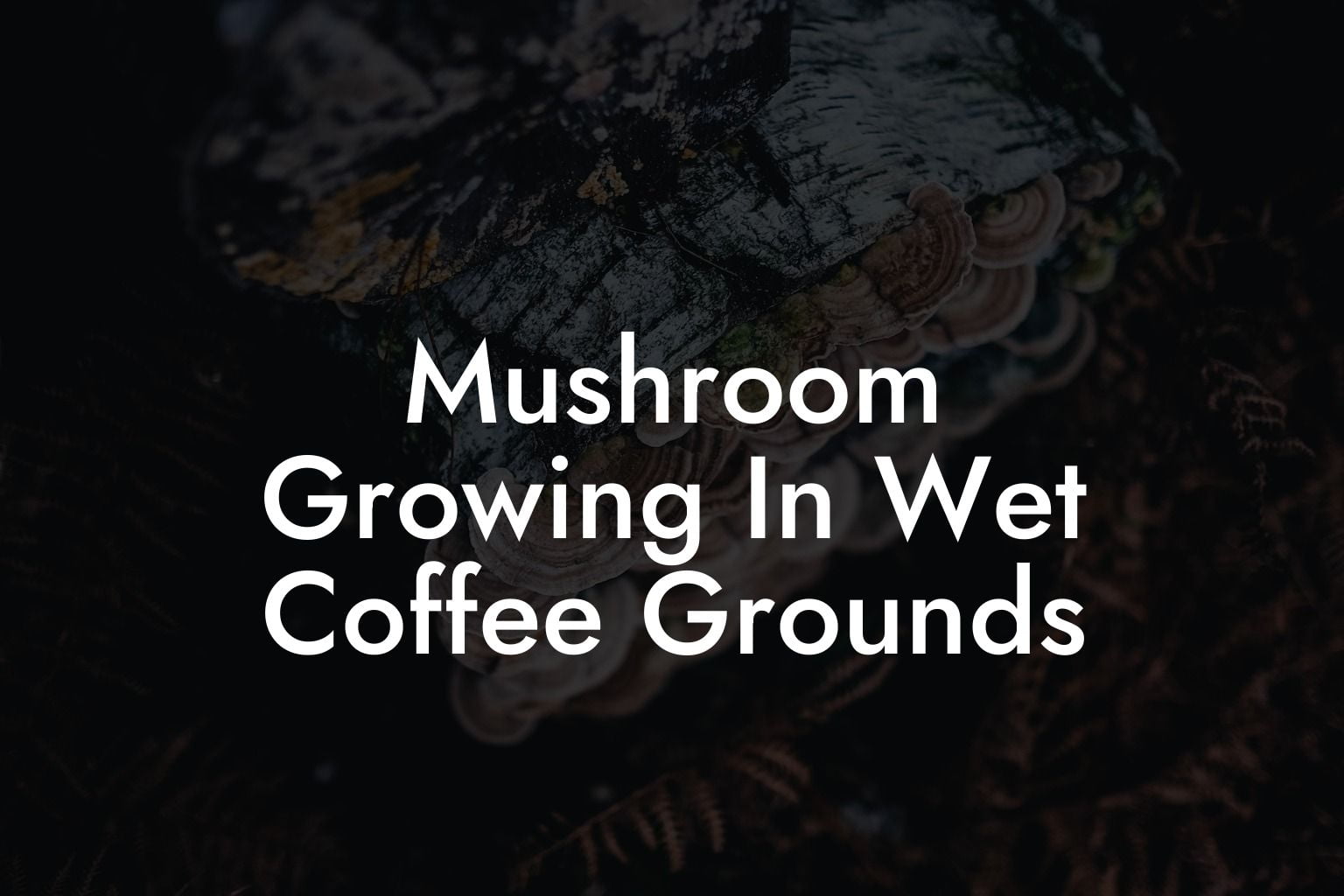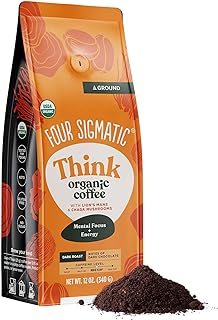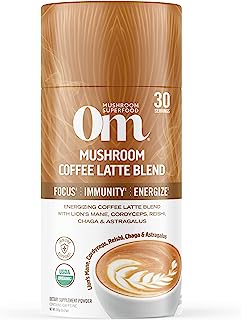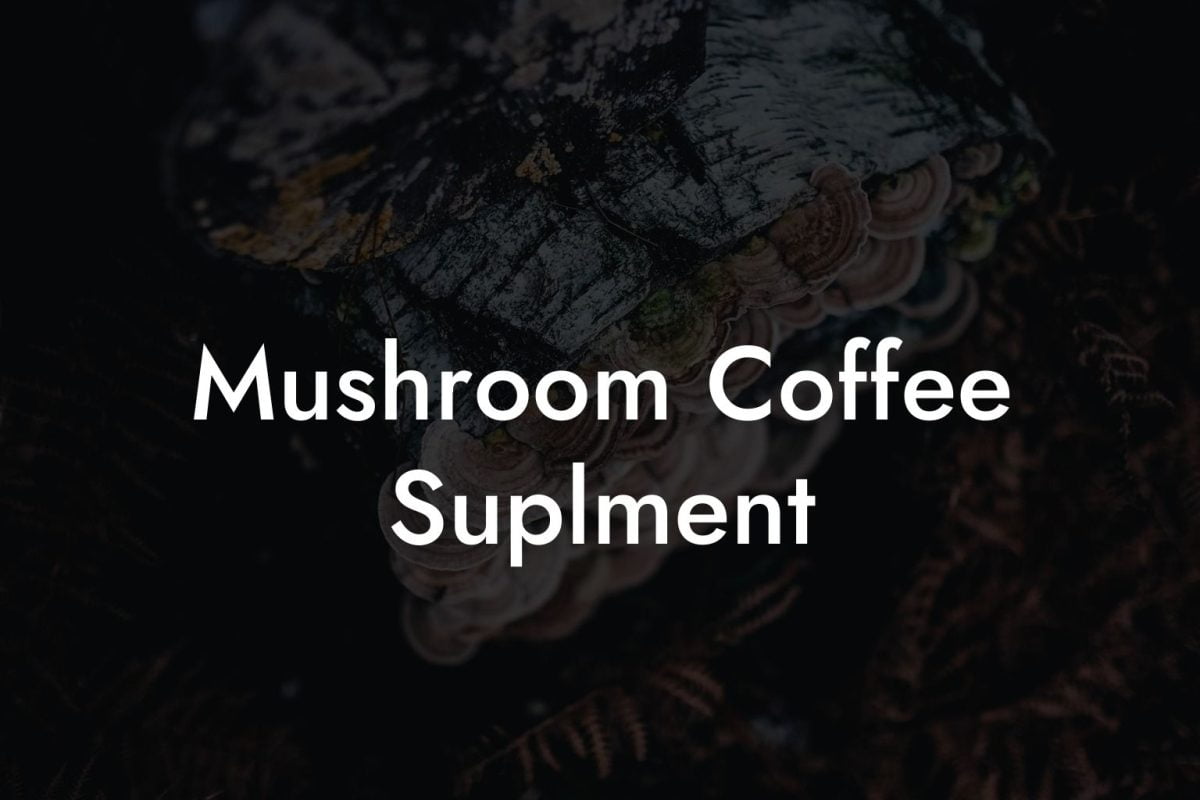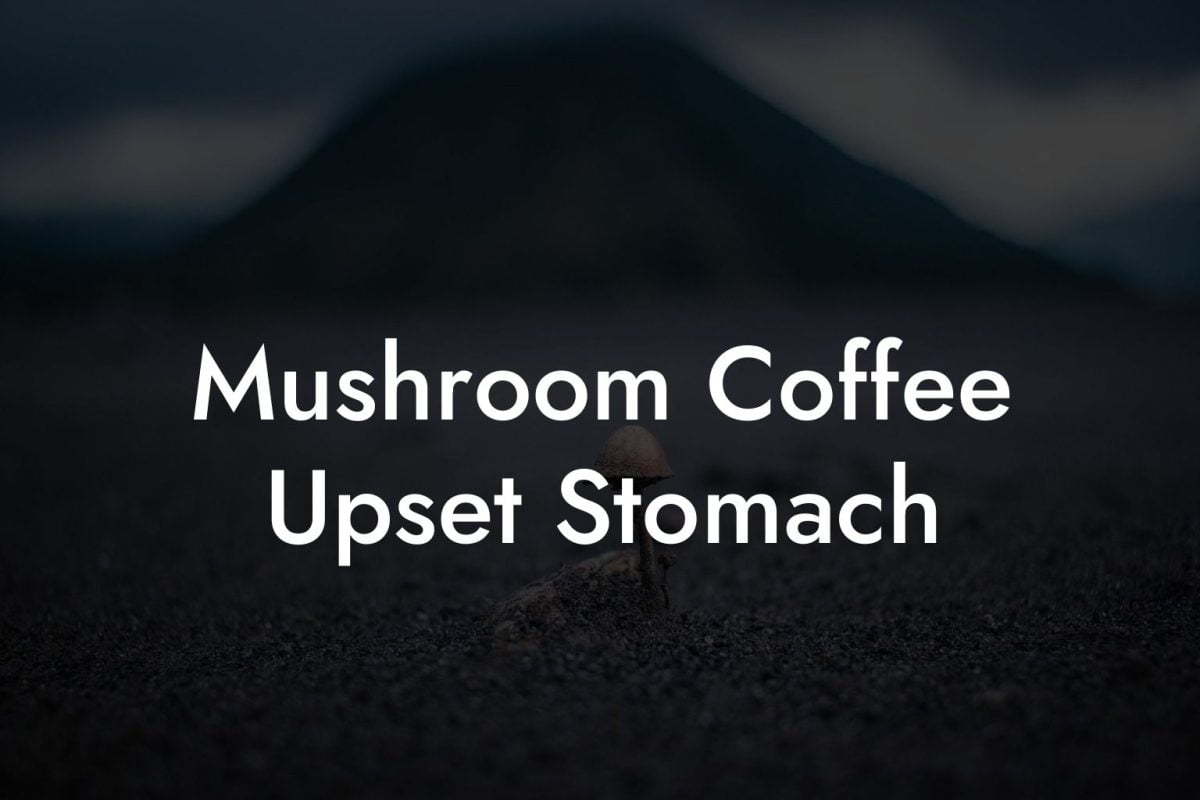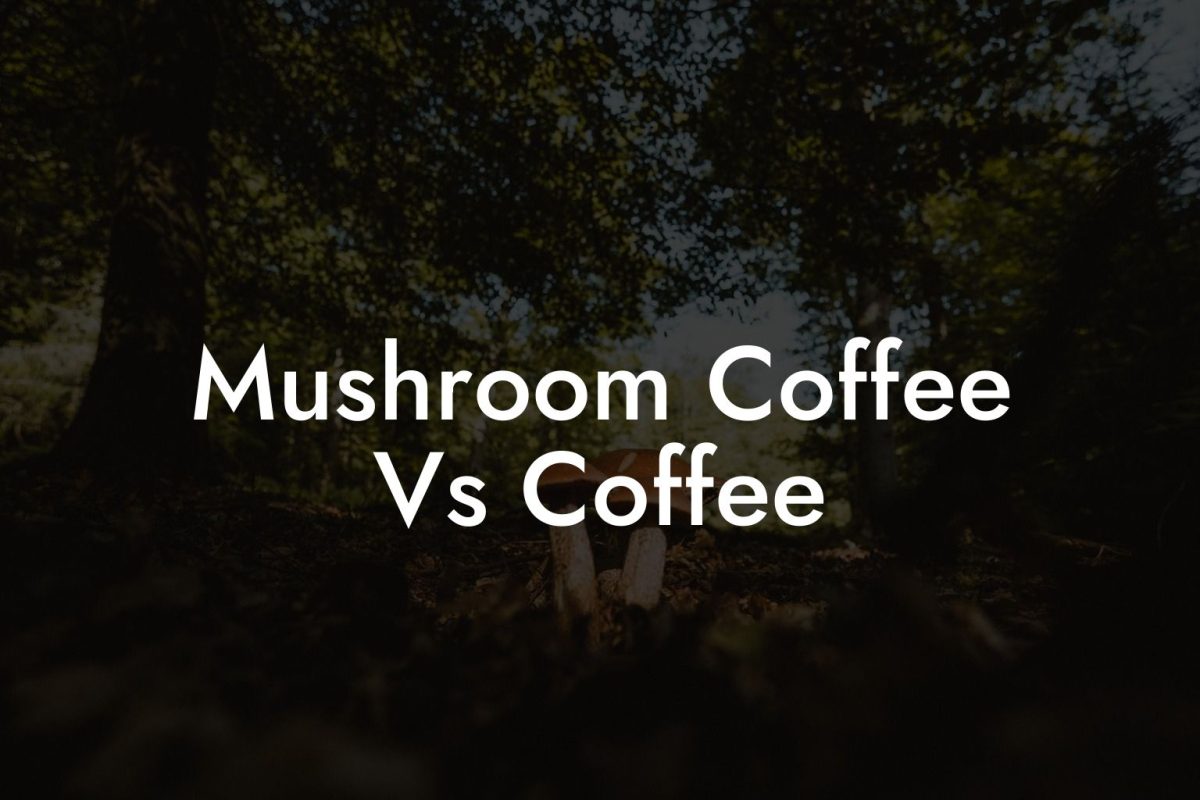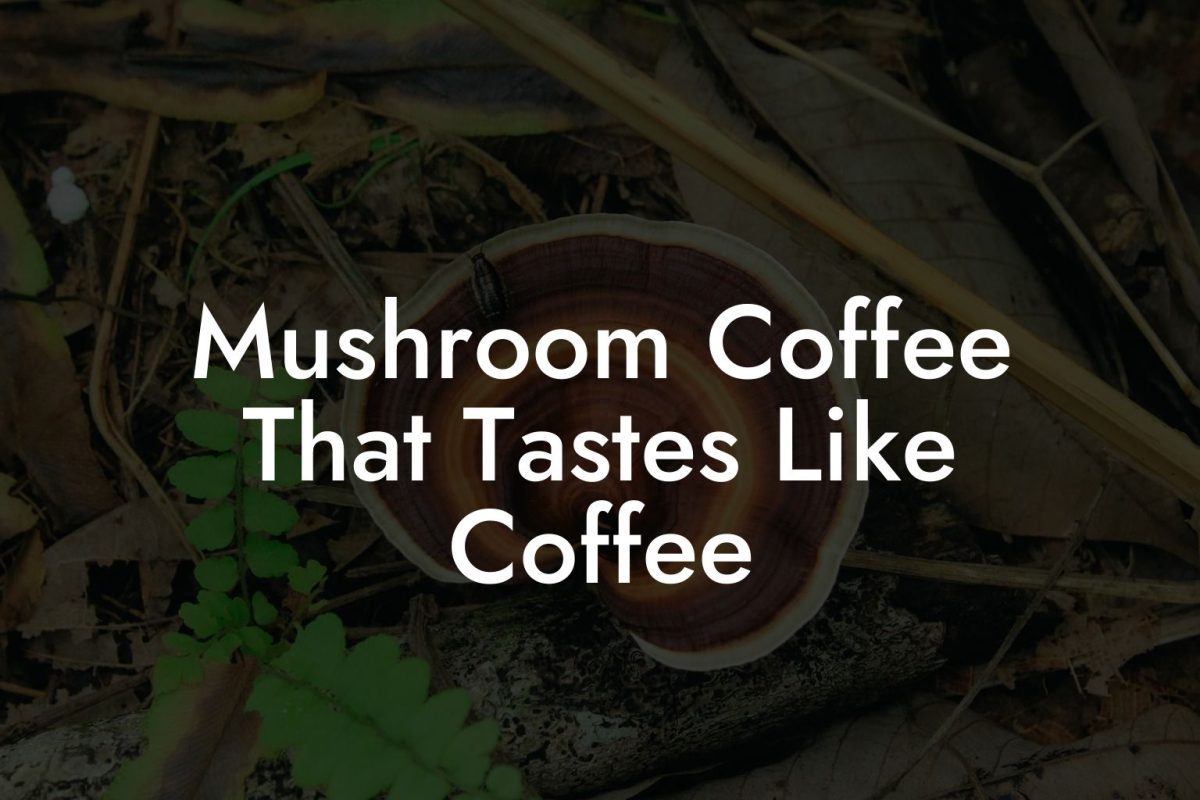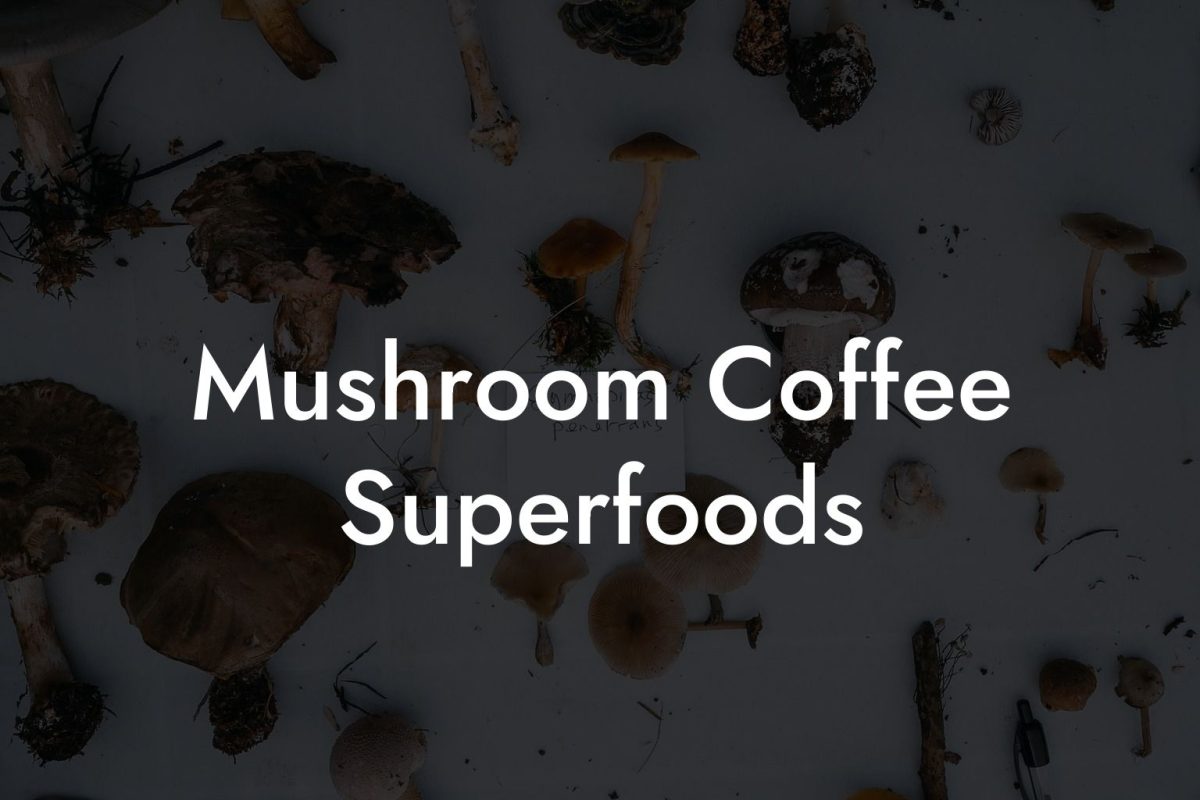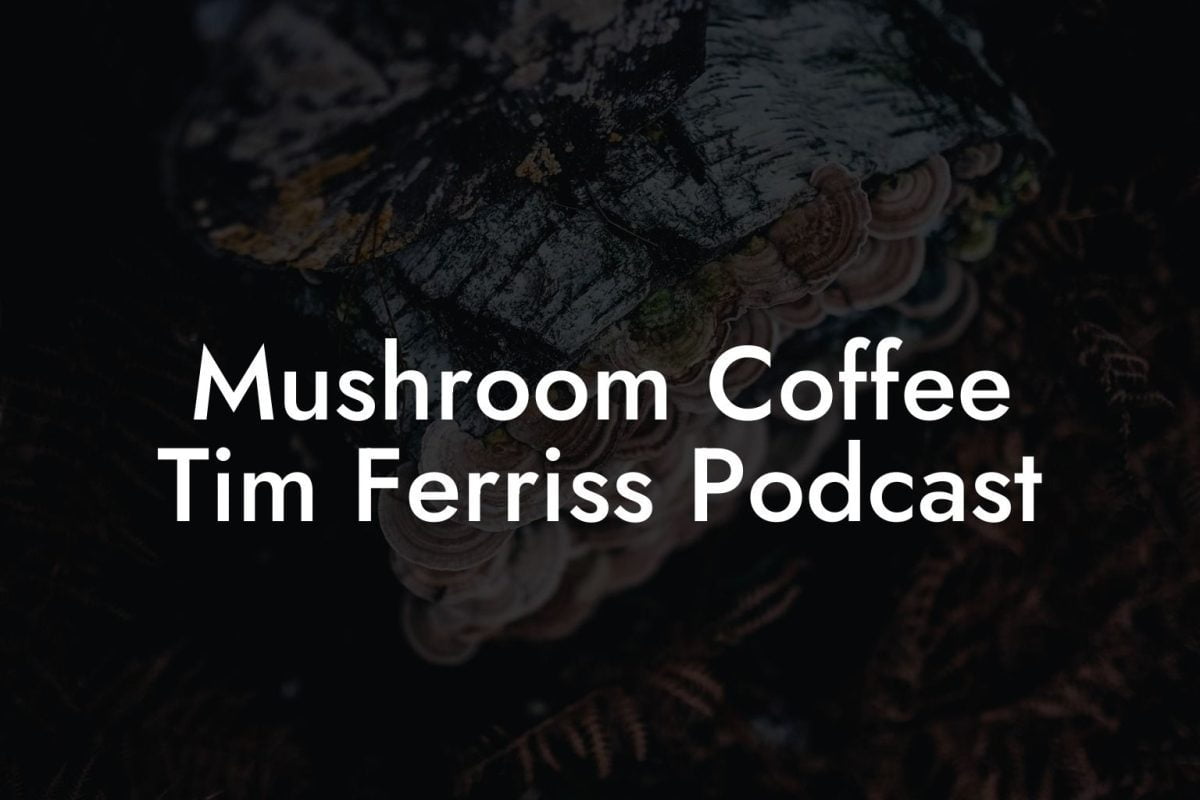Ever thought of turning your leftover coffee into a funky, eco-friendly mushroom haven? Yup, you heard that right! Imagine reusing those soggy, wet coffee grounds—normally destined for the trash—to cultivate an entire legion of mushrooms that not only jazz up your culinary experiments but also add a sustainable twist to your daily brew ritual. If you’re a Gen-Z or millennial coffee addict looking to dabble in the innovative world of Mushroom Coffee, buckle up. We’re about to dive into the quirky, fun, and sometimes surprising universe of mushroom growing in wet coffee grounds!
Quick Links to Useful Sections
- What is Mushroom Growing in Wet Coffee Grounds?
- The Science Behind Mushrooms and Coffee Grounds
- Benefits of Using Wet Coffee Grounds for Mushroom Cultivation
- Step-by-Step Guide to Growing Mushrooms in Wet Coffee Grounds
- Step 1: Gather Your Materials
- Step 2: Prep Your Coffee Grounds
- Step 3: Mix in the Mushroom Spawn
- Step 4: Fill Your Container or Bag
- Step 5: Create the Perfect Environment
- Step 6: Watch the Magic Unfold
- Essential Tools and Materials You’ll Need
- Troubleshooting and Common Challenges
- Contamination
- Improper Humidity
- Temperature Fluctuations
- Slow Colonization
- Sustainable and Eco-Friendly Aspects of Mushroom Cultivation in Coffee Grounds
- Innovative Urban Gardening: A Gen-Z Approach to Mushroom Coffee
- Community Tips and Sharing Experiences
- Resources and Community Support: Your Next Steps
- Your Journey to Sustainable, Delicious Mushroom Coffee Innovation
- Mushroom Coffee: Reimagining Your Morning Brew
- FAQ: Your Burning Questions About Mushroom Growing in Wet Coffee Grounds
- Embracing the Future: Your Eco-Friendly Mushroom Journey
What is Mushroom Growing in Wet Coffee Grounds?
In a nutshell, mushroom growing in wet coffee grounds is the practice of using used, moist coffee grounds as an organic substrate to cultivate mushrooms. Rather than treating coffee waste as rubbish, eco-warriors and urban gardeners alike have discovered that these nutrient-packed remnants provide an excellent medium for many mushroom species to thrive. Think of it as a zero-waste makeover, where your daily caffeine fix fuels a growing community of mushrooms.
The idea might sound a bit unconventional at first—like pairing peanut butter with pickles—but science (and a bit of nature’s wizardry) shows that mushrooms love the rich organic matter in coffee grounds. They find themselves in a perfect environment that is both nutrient-rich and adequately moist, making your kitchen or garden a mini mushroom farm.
This cultivation method has rapidly grown in popularity, thanks to its sustainability, ease, and the sheer fun of transforming everyday waste into something extraordinary. Plus, it aligns perfectly with our generation’s love for all things eco-friendly, experimental, and downright cool.
The Science Behind Mushrooms and Coffee Grounds
So, why do mushrooms seem to enjoy a coffee ground spa day? The secret lies in the unique composition of wet coffee grounds. Rich in organic compounds like nitrogen and essential minerals, coffee grounds offer a fantastic nutritional boost for fungi. Mushrooms, which are essentially the fruiting bodies of a vast network of mycelium, require this organic matter to break down and absorb nutrients.
Looking For The Best Mushroom Coffee? You'll Love These:
When you brew your coffee, the hot water extracts most of the soluble compounds, leaving behind a textured, moist substrate still brimming with nutrients. This “spent” coffee isn’t entirely empty—it holds potential energy in the form of cellulose and other compounds that help the mycelium colonize and produce mushrooms.
Furthermore, the slightly acidic pH of coffee grounds also creates an ideal condition to ward off unwanted microbial competition, giving your friendly mushrooms a head start. The process is a fine-tuned biological dance where the mycelium breaks down the complex molecules, transforming them into a network of nutrient absorbers that eventually sprout into mushrooms. It’s like alchemy—but the kind that’s naturally genius and doesn’t require a wizard’s wand.
Embracing this practice not only satisfies your inner eco-geek but also provides a hands-on glimpse into the fascinating world of fungal biology. It’s a perfect blend of science, sustainability, and a dash of the unexpected!
Benefits of Using Wet Coffee Grounds for Mushroom Cultivation
At first glance, using wet coffee grounds might seem like recycling on a micro-level, but the benefits extend far beyond just reducing waste. Here are some of the major perks:
- Sustainability Boost: Turning your coffee waste into a resource cuts down on the massive amounts of organic refuse that would otherwise end up in landfills.
- Nutrient-Rich Substrate: Coffee grounds are packed with organic compounds and minerals essential for mushroom growth, making them a naturally rich substrate for fungi.
- Cost-Effective Cultivation: Instead of investing in expensive commercial substrates, you can repurpose leftover coffee grounds for a fraction of the cost.
- Urban Gardening Innovation: This method is a hit among urban gardeners, as it fits well in limited spaces and supports sustainable city living.
- Versatility and Experimentation: Growing mushrooms on coffee grounds opens up avenues for experimentation with different mushroom species, each offering unique flavors and textures.
Beyond these tangible benefits, there’s the feel-good factor of knowing you’re part of a movement—one that’s turning everyday habits into a catalyst for eco-friendly innovation. So, the next time you sip your latte or espresso, remember that your coffee could be the starting point of a green revolution in your very own kitchen.
Step-by-Step Guide to Growing Mushrooms in Wet Coffee Grounds
Ready to transform your leftover coffee into a mini mushroom metropolis? Here’s a down-to-earth, easy-to-follow guide that will have you cultivating mushrooms like a pro in no time.
Step 1: Gather Your Materials
Before you channel your inner mycologist, you’ll need to assemble a few supplies:
- Freshly used wet coffee grounds (cool them down after brewing)
- Mushroom spawn (choose a variety that loves coffee grounds—oyster mushrooms are a popular choice)
- A clean container or grow bag with holes for airflow
- Plastic spray bottle for misting, and a pair of gloves (hygiene and cool factor, check!)
Step 2: Prep Your Coffee Grounds
Start by ensuring that your coffee grounds are not too hot, as high temperatures can kill the mushroom spawn. Spread the grounds on a clean surface and let them cool naturally. This step is crucial – think of it as giving your substrate a little chill-out period before the big fungal party begins.
Step 3: Mix in the Mushroom Spawn
Once your grounds are at room temperature, it’s time to bring in the mushroom spawn. Don your gloves, and mix the spawn thoroughly into the coffee grounds. The spawn is essentially the “seed” that will kickstart the mycelium growth. Make sure the mix is even—every particle of coffee ground should get some fungal love.
Step 4: Fill Your Container or Bag
Scoop the spawn-infused coffee grounds into your chosen container or grow bag. If you’re using a bag, punch a few additional holes to ensure proper airflow—a vital ingredient for healthy growth.
Step 5: Create the Perfect Environment
Mushrooms thrive in a warm, humid environment. Place your container in a spot that maintains a consistent temperature (between 60°F and 75°F) and low to moderate light exposure. Mist the container lightly with your spray bottle every couple of days to maintain humidity, but avoid saturating the substrate.
Step 6: Watch the Magic Unfold
Over the next few days to weeks, you’ll notice white, thread-like mycelium weaving its way through the coffee grounds. This process of colonization is critical before you see any actual mushrooms. Patience is key here: once the substrate is fully colonized, you should start to see tiny mushroom pins forming, which will eventually mature into full-grown mushrooms.
Following these steps, you’re well on your way to cultivating your own batch of mushrooms in a fun, sustainable, and incredibly resourceful manner. It’s kind of like having a mini science lab right in your kitchen, with the added bonus of tasty results!
Essential Tools and Materials You’ll Need
While the process of growing mushrooms in wet coffee grounds is relatively straightforward, having the right tools makes all the difference between a groovy success and a “what went wrong?” moment. Here’s your list of must-haves for this adventure:
- Used Wet Coffee Grounds: Fresh from your brew, cooled down to room temperature.
- Mushroom Spawn: Available from specialty garden centers or online stores. Oyster mushrooms or shiitake are excellent starters.
- Clean Grow Container/Bag: Ensure it has proper drainage and ventilation holes for ideal air circulation.
- Misting Bottle: A simple plastic bottle filled with water to keep your environment humid.
- Gloves and a Mask: Hygiene is key in mushroom cultivation to avoid contamination, so suit up!
- Thermometer & Hygrometer: To monitor temperature and humidity levels—science meets self-care.
- Mixing Tools: A spatula or a pair of spoon-like tools that help mix the spawn into the grounds uniformly.
Investing in these tools not only ensures a smoother cultivation process but also adds a layer of fun and strategy to your mushroom-growing hobby. With the right setup, you’re creating a controlled environment where your mushrooms can flourish without interference, making the entire journey as rewarding as the final harvest.
Troubleshooting and Common Challenges
No adventure is without its bumps, and mushroom cultivation is no exception. Even seasoned growers might encounter issues—which is all part of the process. Here are some common challenges, along with tips on how to avoid or remedy them:
Contamination
One of the biggest risks when growing mushrooms in coffee grounds is contamination—whether it’s mold, bacteria, or unwanted fungi. To keep contamination at bay, always work in a clean environment. Sterilize your tools, wash your hands (or don gloves), and ensure your coffee grounds have cooled completely before using them.
Improper Humidity
Mushrooms need a humid environment to grow, but too much moisture can lead to soggy, smelly substrates. Monitor your setup with a hygrometer and adjust your misting routine accordingly. If conditions seem too wet, allow better airflow by opening your container slightly or moving it to a less humid spot.
Temperature Fluctuations
Maintaining a consistent temperature between 60°F and 75°F is critical. Large temperature swings can stunt growth or even kill your mycelium. If you live in an area with fluctuating indoor temperatures, consider using a small space heater or a cooling fan to balance the conditions.
Slow Colonization
Sometimes, your mycelium might take longer than expected to colonize the substrate. This could be due to low temperatures, insufficient humidity, or simply the natural pace of growth. Patience is key here. If things seem particularly sluggish, check your environmental controls and be sure you haven’t inadvertently introduced any contaminants.
While troubleshooting can be a bit frustrating, each hiccup is an opportunity to learn more about the delicate balance required by nature. Remember, every misstep adds to your expertise and brings you one step closer to mastering this eco-friendly art form.
Sustainable and Eco-Friendly Aspects of Mushroom Cultivation in Coffee Grounds
One of the most compelling reasons to embrace mushroom growing in wet coffee grounds is its inherently sustainable nature. By repurposing coffee waste, you contribute to a circular economy that values resourcefulness over wastefulness. In an era where sustainability isn’t just a buzzword but a way of life, this method is a perfect example of how creativity and environmental consciousness can join forces.
Repurposing coffee grounds means you’re not only reducing the organic waste that ends up in landfills but also saving resources that would otherwise be spent on commercial substrates. This resource-efficient process has a domino effect: it reduces your environmental footprint, promotes organic gardening practices, and even supports local ecosystems by encouraging biodiversity.
Moreover, adopting this method can inspire your community, friends, and even your local coffee shop to consider sustainable alternatives. It’s a conversation starter—a way to discuss environmental challenges and share practical, hands-on solutions. Plus, it’s incredibly Instagrammable: snap a pic of your thriving mushroom patches growing beneath that morning espresso, and you’re sure to earn some serious eco-cred.
Innovative Urban Gardening: A Gen-Z Approach to Mushroom Coffee
Urban living can sometimes feel like a concrete jungle with little room for nature. However, the art of growing mushrooms in wet coffee grounds turns even the smallest balcony or kitchen nook into a green oasis. This practice resonates especially with the Gen-Z and millennial crowd—those who value creativity, sustainability, and innovation in every aspect of their lives.
Urban gardening using unconventional mediums is more than just a trend; it’s a lifestyle that challenges the status quo. Imagine hosting a brunch where your mushrooms—grown right on your coffee waste—are the star ingredient. Whether you’re an aspiring chef, an eco-enthusiast, or just in it for the cool factor, transforming wasted coffee into gourmet mushroom meals is the kind of project that sparks conversations and inspires creativity.
Incorporating mushroom cultivation into your urban lifestyle is not only about sustainability—it’s about redefining what’s possible in the heart of the city. It’s a rebellion against disposable culture, a way to bring nature back into our daily routines, and a testament to how resourceful and forward-thinking our generation can be.
Community Tips and Sharing Experiences
One of the best parts of any DIY project is the community that grows around it—pun totally intended! From online forums and social media groups dedicated to urban gardening to local workshops, sharing your mushroom-growing journey can be incredibly rewarding. Whether you hit a snag or make a groundbreaking discovery, community support is invaluable.
Many urban gardeners and sustainability aficionados have taken to Instagram, TikTok, or even local community boards to share tips, troubleshooting advice, and time-lapse videos of their mushroom colonies in action. These digital communities not only provide practical advice but also serve as inspiration, proving that collective knowledge is the secret ingredient to success.
So, if your mushrooms aren’t sprouting as quickly as you’d hoped, don’t sweat it—post a picture online, ask for advice, and join the conversation. Chances are, others have encountered the same hiccups and may have ingenious hacks to share. In this digital age of DIY and sustainability, collaboration isn’t just encouraged; it’s a fundamental part of the journey.
Resources and Community Support: Your Next Steps
Ready to take your eco-friendly mushroom adventure even further? Here are some resources and community channels to get you started:
- Online Forums and Facebook Groups: Search for niche communities focused on urban mushroom cultivation and sustainable gardening. These spaces are perfect for troubleshooting, inspiration, and sharing your progress.
- YouTube DIY Channels: Visual learners will appreciate tutorials from community experts who showcase advanced techniques, hacks, and creative presentations of mushroom coffee experiments.
- Local Urban Farming Workshops: Many cities offer workshops on sustainable gardening—check out local urban farms or community centers that host instructional sessions.
- Eco-Friendly Blogs & Websites: Follow blogs and influencers dedicated to zero-waste living and urban agriculture for up-to-date tips and success stories.
- Specialty Stores: Look online for shops offering mushroom spawn, grow bags, and other cultivation supplies to kickstart your project.
Tapping into these resources not only builds your knowledge base but also connects you with a network of like-minded individuals who are passionate about redefining sustainable living. Whether you’re a curious beginner or an experienced urban gardener, the community is there to support your vision—one wet coffee ground at a time.
Embrace the collaborative spirit and let your journey into mushroom cultivation be an experiment in community-driven innovation. The next step is yours: research, share, learn, and, most importantly, have fun turning waste into wonder!
Your Journey to Sustainable, Delicious Mushroom Coffee Innovation
Every journey starts with a single step—a single cup of coffee, if you will. Embracing mushroom cultivation with wet coffee grounds is more than just a quirky DIY project; it’s a lifestyle choice that marries sustainable practices with culinary creativity. It’s a bold affirmation that every drop of waste has potential, and that innovation can bloom from even the most unexpected sources.
Picture this: a lazy weekend morning where, instead of heading straight to the cafe, you spend some quality time nurturing your very own mushroom garden. Soon enough, your living space transforms into a poster child for sustainable living, where every sip of mushroom-infused coffee carries a story of renewal, resourcefulness, and a dash of rebellious creativity.
Whether you’re an established urban gardener or a curious newbie just dipping your toes into experimental culinary trends, this process is a reminder that nature is all about reinvention. By repurposing wet coffee grounds, you not only cut down on waste but also cultivate a new flavor profile for your daily brew—a profile that’s steeped in sustainability, creativity, and the reassuring spirit of a community that dares to be different.
So, let your journey begin. Embrace the occasional mishap, celebrate your triumphs, and remember that the best innovations often emerge from our willingness to experiment. With every harvest of mushrooms, you’re not just creating a tasty supplement for your coffee—you’re championing a movement toward a greener, brighter, and tastier future.
Here’s to transforming the mundane into the extraordinary—one wet coffee ground at a time!
Mushroom Coffee: Reimagining Your Morning Brew
If you thought integrating mushrooms into your coffee was just a novelty, think again. In recent years, mushroom coffee has surged in popularity as an innovative health tonic that blends the functional benefits of medicinal mushrooms—think reishi, lion’s mane, and cordyceps—with your daily cup of joe. This revolutionary beverage aims to provide an energizing lift while reducing the typical jittery side effects of caffeine.
By growing mushrooms on wet coffee grounds and then incorporating them into your brew, you’re not only playing with sustainable food practices but also tapping into a powerful realm of wellness. Medicinal mushrooms are renowned for their adaptogenic properties, immune-supporting benefits, and overall contribution to mental clarity. When combined with the antioxidants found in coffee, the result is an elixir that might just be the supercharged upgrade your mornings were waiting for.
Imagine starting your day with a drink that supports your brain, boosts your immune system, and still fuels your hustle. Whether you’re prepping for back-to-back Zoom calls or a chill day of creative projects, mushroom coffee is emerging as the health trend that satisfies both your taste buds and your need for a sustainable lifestyle.
FAQ: Your Burning Questions About Mushroom Growing in Wet Coffee Grounds
We know you have questions, and we’ve got answers. Here’s a roundup of the most common queries from curious urban gardeners and coffee aficionados alike:
1. What types of mushrooms can I grow on wet coffee grounds?
Popular choices include oyster mushrooms and shiitake, as they thrive in nutrient-rich coffee substrates. However, you can experiment with other varieties, but be sure to research their specific growing conditions.
2. Do I need any special equipment to start this process?
Not really! You just need cooled, wet coffee grounds, some mushroom spawn, a clean container or bag with ventilation, and basic tools like a spray bottle for humidity. Additional items like a thermometer or hygrometer are optional but helpful.
3. How long does it take to see mushrooms growing?
After mixing in the spawn and creating the right environment, it can take anywhere from a couple of weeks to a month for the mycelium to fully colonize the substrate and mushrooms to start pinning.
4. What should I do if I notice mold or contamination?
If you detect mold, ensure you’re working in a sterile environment, check your humidity and temperature settings, and consider discarding the contaminated batch to prevent it from affecting the healthy mycelium.
5. Can I use this method for large-scale cultivation?
Absolutely! Many urban gardeners scale up by using multiple containers or bags. Just be mindful of maintaining consistent conditions and hygiene to ensure success on a larger scale.
6. Is growing mushrooms in coffee grounds safe?
Yes, as long as you follow proper hygiene practices and monitor environmental conditions. Always use pasteurized or well-cooled coffee grounds to reduce the risk of unwanted bacteria or mold.
These FAQs are just the tip of the fung-al iceberg (see what we did there?) when it comes to mushroom cultivation using coffee grounds. For more insights and community advice, be sure to dive into forums and connect with fellow eco-innovators.
Embracing the Future: Your Eco-Friendly Mushroom Journey
In a world where every action matters for the planet, turning your wet coffee grounds into a thriving mushroom habitat is more than just an exciting experiment—it’s a statement. It’s a declaration that sustainability, innovation, and a sprinkle of creativity can converge to yield not only a yummy supplement for your morning coffee but also a healthier, greener future.
Every time you repurpose waste, you’re challenging the status quo and redefining what it means to be eco-conscious. This journey is not just about mushrooms or coffee; it’s about embracing a new way of living that honors both nature and innovation. And by diving into this practice, you’re not only enhancing your life with the unique flavors of mushroom coffee—you’re also setting an example for others, one wet coffee ground at a time.
So, whether you’re a curious beginner or an experienced urban gardener, take pride in your experimentation. Share your successes, learn from your setbacks, and remember that every step forward is a small victory for sustainability. Your journey into the world of mushroom cultivation in wet coffee grounds is not only an adventure in flavor but a testament to the innovative spirit of our generation!
Celebrate your creativity, stay curious, and continue to redefine what’s possible—because when life gives you coffee grounds, turn them into mushrooms and craft a narrative of eco-friendly resilience and delicious innovation.
Looking For The Best Mushroom Coffee? You'll Love These:
Useful Interruption: Dive deeper into the world of Mushroom Coffee with our most popular sections. If there is anything you think is missing or anything you would love for us to write about, just give us a shout.
- Mushroom Coffee Equipment & Product Reviews
- Mushroom Coffee Recipes & Creative Variations
- Mushroom Coffee Guides & Troubleshooting
- Mushroom Coffee Brewing & Preparation Techniques
- Model Rocket Advanced Rocketry & Innovations
- Mushroom Coffee Fundamentals
- Model Rocket Equipment Reviews & Digital Tools
- Mushroom Coffee Health Benefits & Wellness
- Mushroom Coffee Mycology & Scientific Insights
- Mushroom Coffee Community, Lifestyle & Engagement
I tried mushroom coffee this morning and told my friend, "This brew is spore-tacular!" He shot back, "Guess that's why it's such a cap-tivating way to kickstart your day!"

